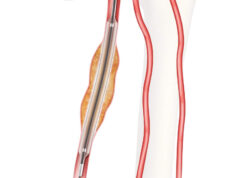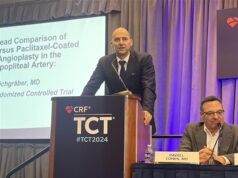“Not all Drug-Coated Balloons (DCBs) are created equal”, Juan Granada (New York, USA), tells Vascular News in this second episode of a four-part series on the history of DCBs.
Granada discusses why there are differences in these devices, noting that some have a longer term retention of drug, while some have opted for a more soluble drug so it can disappear more quickly from the tissue. Although many companies are using paclitaxel, the resulting biological effects between the devices may be “quite different”. The IN.PACT™ Admiral™ DCB (Medtronic) originally followed a “different technological principle” compared to other devices, and has a crystalline coating allowing for long-term retention of the drug, says Granada. He adds that this is why coatings and formulations that maintain therapeutic tissue levels over time have a higher chance to have a better clinical result long term.
Local drug delivery in the peripheral field has “changed our lives forever” and “we all need to be grateful that these technologies were aggressively pushed forward and now we have therapies that can really help critically ill patients,” concludes Granada.
This video is sponsored by Medtronic.
Episode 1: Go behind the scenes to delve into the birth and evolution of drug-coated balloons for Peripheral Interventions: Insight from two pioneers EPISODE 3: The unique recipe for long-term clinical benefit with IN.PACT™ Admiral™ DCB
EPISODE 3: The unique recipe for long-term clinical benefit with IN.PACT™ Admiral™ DCB
Episode 4: Real world data show IN.PACT Admiral DCB is “very efficient” even in complex lesions
COMING SOON
Episode 5: The impact of long-term DCB outcomes on patients’ quality of life













